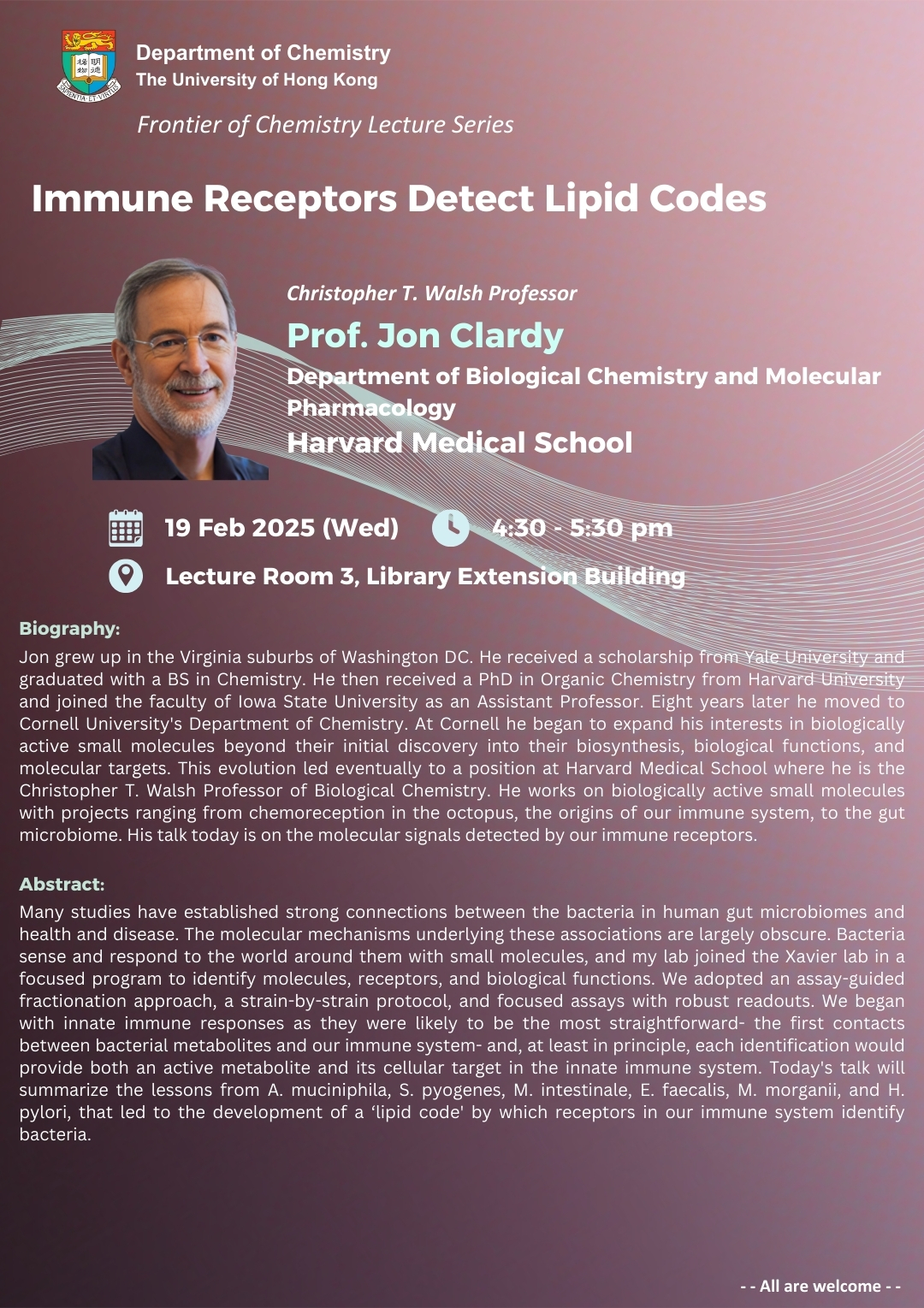| Date | 19 Feb 2025 |
| Time | 4:30 pm - 5:30 pm (HKT) |
| Venue | Classroom 3, Library Extension Building |
| Speaker | Prof. Jon Clardy |
| Institution | Christopher T. Walsh Professor, Department of Biological Chemistry and Molecular Pharmacology, Harvard Medical School |

Many studies have established strong connections between the bacteria in human gut microbiomes and health and disease. The molecular mechanisms underlying these associations are largely obscure. Bacteria sense and respond to the world around them with small molecules, and my lab joined the Xavier lab in a focused program to identify molecules, receptors, and biological functions. We adopted an assay-guided fractionation approach, a strain-by-strain protocol, and focused assays with robust readouts. We began with innate immune responses as they were likely to be the most straightforward- the first contacts between bacterial metabolites and our immune system- and, at least in principle, each identification would provide both an active metabolite and its cellular target in the innate immune system. Today's talk will summarize the lessons from A. muciniphila, S. pyogenes, M. intestinale, E. faecalis, M. morganii, and H. pylori, that led to the development of a ‘lipid code' by which receptors in our immune system identify bacteria.
